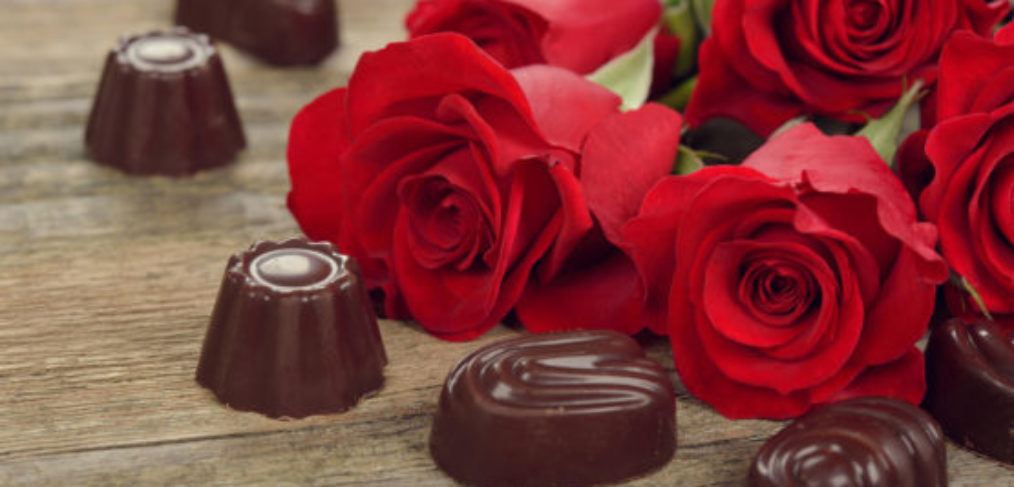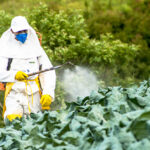Chocolate + Roses: Sourcing Matters

Something special you’d receive on your birthday or anniversary?
A go-to gift idea for anyone?
Or maybe something you’d purchase for yourself as the perfect pick-me-up?
All of the above may be true; but the two have a lot more in common than being lovely tokens of love and affection: they’re two products that, when we don’t source them properly, may be inadvertently supporting inhumane labor practices and farming that is anything but conducive to protecting our children and keeping planet healthy and clean.
For example, when it comes to chocolate:
- Over 60% of the world’s cocoa comes from two countries in West Africa – Ghana and the Ivory Coast. According the Global Slavery Index 2018 thousands of children today are trafficked and forced to work on the cocoa farms (1).
- Less than 5% of the chocolate consumed globally is produced according to Fair Trade standards (2).
- Cocoa farmers usually clear tropical forests to plant new cocoa trees rather than reusing the same land. That practice has spurred massive deforestation in West Africa, particularly in Ivory Coast. Experts estimate that 70% of the country’s illegal deforestation is related to cocoa farming (3).
And roses:
- More than 90 percent of Ecuador’s blooms are exported, primarily to the United States, and mostly for two holidays—Valentine’s Day and Mother’s Day. Yet virtually every rose is really an industrial product treated with pesticides and fungicides by a commercial farm before making its way to your sweetheart or mother (4).
- Roses tend to be anything but sustainable than other varieties of flowers; they’re bad for the environment because of the amount of energy it takes to produce them (5).
- The delivery of roses is an exercise in carbon creation which not only pollutes the atmosphere, but also serves to expand your personal carbon footprint (6).
- 90% of the roses imported (mainly from Colombia and Ecuador come from conditions in which exploitation children and adults occurs regularly. Workers are pushed to complete 20 hour days at 250 to 300 stems per hour, according to an International Labor Rights Forum report. In addition to the back-breaking (and hand-breaking) labor, they must work in close proximity with pesticides containing carcinogens and toxins (7).
Here’s the good news: the simple act of making our own better choices can make an impact.
Once we’ve opened our eyes to what’s going on, we can consciously source both our chocolate and flowers responsibly, and share what we know with those around us.
Below are some steps we can each take to ensure we’re not contributing to the deplorable conditions listed above:
- Shop locally. While you might not find locally grown roses where you live, consider whether you must have roses… or perhaps you can purchase another flower that is by default, going to last longer and look more beautiful due to being cut the same day and not having had to travel vast distances.
- Same goes for chocolate; with the growth in the food space these days, it’s not uncommon at all to find small batch chocolates, perhaps at your local farmer’s market!
- Ask questions. At your florist, nursery or grocery store. If you’re not satisfied with the answer you receive, that in itself can be your guide.
- Look for the “Fairtrade Mark”; the only label that indicates a product is certified by the most recognized ethical labeling system in the world, following a rigorous set of social, economic and environmental standards.
Once more example of how knowledge is empowering; once we know, we know and we can begin to make changes.
Even if it feels small, it’s a step in the right direction!
(1) https://www.thenoproject.org/slavery/cocoa-slavery/#:~:text=Over%2060%25%20of%20the%20world%27s,work%20on%20the%20cocoa%20farms
(2) https://fairtradecampaigns.org/wp-content/uploads/2014/08/Cocoa-101.pdf
(3) https://www.worldwildlife.org/magazine/issues/spring-2017/articles/bittersweet-chocolate-s-impact-on-the-environment
(4) https://www.audubon.org/magazine/january-february-2008/a-rose-not-rose
(5) https://sustainabilitynook.com/are-roses-bad-for-environment/
(6) https://terrapass.com/blog/environmental-impact-roses-chocolate#:~:text=As%20a%20general%20rule%2C%20the,are%20grown%20closer%20to%20home.
(7) https://www.business-humanrights.org/en/latest-news/valentines-roses-linked-to-labour-exploitation-including-child-labour/
(8) https://www.fairtradeamerica.org/news-insights/your-guide-to-fairtrade-labeling/





